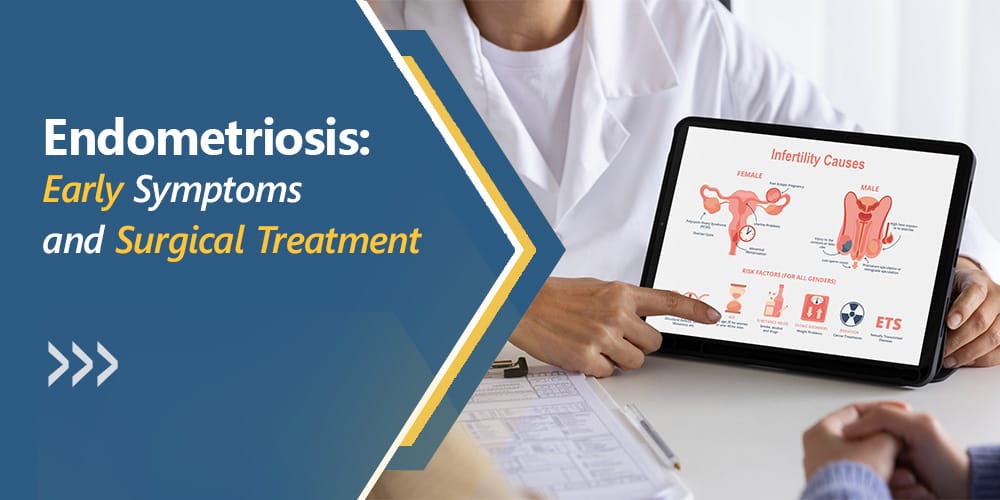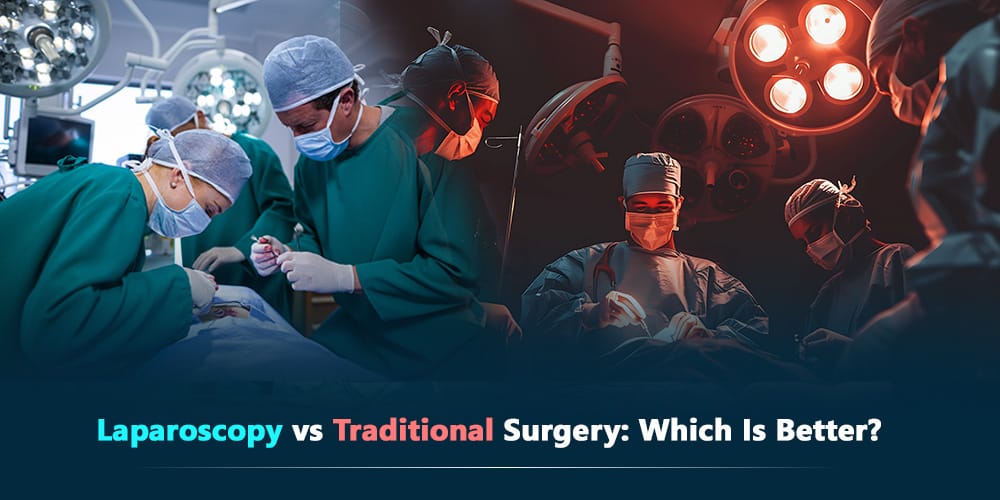Asherman’s Syndrome is a significant yet often overlooked condition that primarily affects women’s reproductive health. This syndrome, characterised by the formation of scar tissue in the uterus, can lead to complications such as infertility, recurrent miscarriages, and irregular menstrual cycles. While it can occur at any age, it predominantly affects women of reproductive age, particularly those who have undergone surgical procedures like dilation and curettage (D&C).
In this blog, our expert gynaecologist in Jaipur, Dr. Pankhuri Gautam, will answer frequently asked questions and provide expert insights into Asherman’s Syndrome, covering diagnosis, treatment options, and management strategies. We aim to enhance understanding and help those affected manage their condition effectively, ensuring informed decisions about their reproductive health. Join us as we explore crucial information tailored to support your health journey.
1. What is Asherman’s Syndrome?
Answer: Asherman’s Syndrome is a rare condition characterised by scar tissue formation, or adhesions, in the uterus. These adhesions can lead to partial or complete blockage of the uterine cavity. The syndrome most commonly arises after uterine surgery, such as a dilation and curettage (D&C), which is often performed after a miscarriage, abortion, or to remove retained placental tissue after childbirth.
2. How common is Asherman’s Syndrome?
Answer: Asherman’s Syndrome is considered rare, although its exact prevalence is not well-documented. According to the International Asherman’s Association, it affects approximately 1.5% of women undergoing hysterosalpingography (HSG). It is found in up to 40% of patients who have had D&C procedures for retained products of conception. Many cases may go undiagnosed due to subtle symptoms and challenges in detection.
3. What causes Asherman’s Syndrome?
Answer: The primary cause of Asherman’s Syndrome is trauma to the uterine lining, often from surgical procedures like D&C or caesarean section. Other causes include infections, physical trauma, and radiation therapy for pelvic cancers. Less common causes include autoimmune disorders, congenital uterine anomalies, and previous uterine surgeries.
4. What are the symptoms of Asherman’s Syndrome?
Answer: Common symptoms include menstrual irregularities such as lighter or absent periods, pelvic pain, infertility, and recurrent miscarriages. Sometimes, women experience no symptoms, or their periods may appear normal.
5. How does Asherman’s Syndrome affect fertility?
Answer: Asherman’s Syndrome can severely impact fertility by obstructing the uterine cavity and disrupting the endometrial lining. These adhesions make it difficult for embryos to implant correctly, leading to challenges in conception and an increased risk of miscarriage.
6. Can Asherman’s Syndrome cause pregnancy complications?
Answer: Yes, Asherman’s Syndrome can lead to complications during pregnancy, including placenta previa (where the placenta partially or completely covers the cervix), intrauterine growth restriction (IUGR), and an increased risk of preterm birth. Close monitoring and management throughout pregnancy are essential to minimise these risks.
7. How is Asherman’s Syndrome diagnosed?
Answer: Diagnosis typically involves a combination of medical history, physical examination, and imaging tests. Essential diagnostic methods include hysteroscopy, which allows direct visualisation of the uterine cavity; ultrasound (especially transvaginal ultrasound) to detect adhesions; hysterosalpingography (HSG) using contrast dye to assess the uterine cavity, and in some cases, MRI for more detailed imaging.
8. What imaging tests can be used to diagnose Asherman’s Syndrome?
Answer: Imaging tests such as transvaginal ultrasound are crucial for detecting the presence and severity of intrauterine adhesions. Hysteroscopy remains the gold standard for direct visualisation and may be combined with saline infusion sonography to provide more explicit images of the uterine cavity. HSG and MRI are also utilised in complex cases to evaluate the extent and location of adhesions.
9. What are the treatment options for Asherman’s Syndrome?
Answer: Treatment for Asherman’s Syndrome aims to remove adhesions and restore the uterus’s normal functioning. Options include hysteroscopic adhesiolysis, where a hysteroscope is used to carefully remove scar tissue, and hormone therapy to promote the regrowth of the uterine lining. In severe cases, additional procedures, such as placing intrauterine devices or balloon catheters, may be necessary to prevent adhesion recurrence.
10. What is the success rate of treatment for Asherman’s Syndrome?
Answer: The success rate of treatment varies depending on factors such as the severity of adhesions, the patient’s overall health, and the surgeon’s skill in performing the procedure. Many women experience restored menstrual function and improved fertility following treatment.
11. Can Asherman’s Syndrome recur after treatment?
Answer: There is a risk of adhesion recurrence, particularly in severe cases. To minimise this risk, post-treatment care often includes hormone therapy and regular follow-up hysteroscopies to monitor the uterine cavity and address any new adhesions promptly.
12. How long does recovery take after treatment for Asherman’s Syndrome?
Answer: Recovery time varies depending on the severity of adhesions and the type of treatment used. It can range from several weeks to months, during which hormonal therapy and follow-up appointments are essential to monitor healing and prevent complications.
13. Can Asherman’s Syndrome be prevented?
Answer: While not all cases of Asherman’s Syndrome can be prevented, taking precautionary measures during uterine surgeries, such as minimising the number of D&C procedures and using gentle surgical techniques, can reduce the risk of developing adhesions. Early diagnosis and prompt treatment are crucial for minimising long-term complications.
14. Are there support groups for individuals with Asherman’s Syndrome?
Answer: Yes, support groups and resources are available to provide emotional and psychological support for individuals living with Asherman’s Syndrome. These groups offer valuable information, community support, and coping strategies to manage the condition’s emotional impact.
15. What are the emotional impacts of Asherman’s Syndrome?
Answer: Asherman’s Syndrome can cause significant emotional stress, including feelings of frustration, anxiety, and depression, mainly due to fertility challenges and recurrent miscarriages. Support from healthcare providers, counsellors, and support groups can help individuals manage these psychological effects effectively.
16. Can lifestyle changes help manage Asherman’s Syndrome?
Answer: While lifestyle changes alone may not treat Asherman’s Syndrome, maintaining a balanced diet, regular exercise, and effective stress management techniques can support overall reproductive health and improve the body’s response to treatment.
17. What role does surgery play in treating Asherman’s Syndrome?
Answer: Surgery is crucial in removing adhesions and restoring the uterus’s typical structure. While effective, surgical intervention carries risks, including adhesion recurrence and complications, which should be discussed with a healthcare provider.
18. How can I find a specialist for Asherman’s Syndrome?
Answer: Finding a specialist experienced in diagnosing and treating Asherman’s Syndrome is essential for personalised care. Start by seeking referrals from your primary care physician or gynaecologist. If you are in India, you can contact my clinic for expert advice and comprehensive care.
Conclusion
This blog covers aspects of Asherman’s Syndrome, including its causes, symptoms, effects on fertility and pregnancy, diagnosis, and treatment options. Understanding these key points is vital for effectively managing the condition and improving reproductive health outcomes.
As a gynaecology and reproductive health specialist, I, Dr Pankhuri Gautam, am here to help. Feel free to reach out to share your experiences or ask any questions. Our health and comfort are our top priorities, and we are dedicated to providing you with expert care and personalised treatment.
Contact us today to schedule an appointment.





